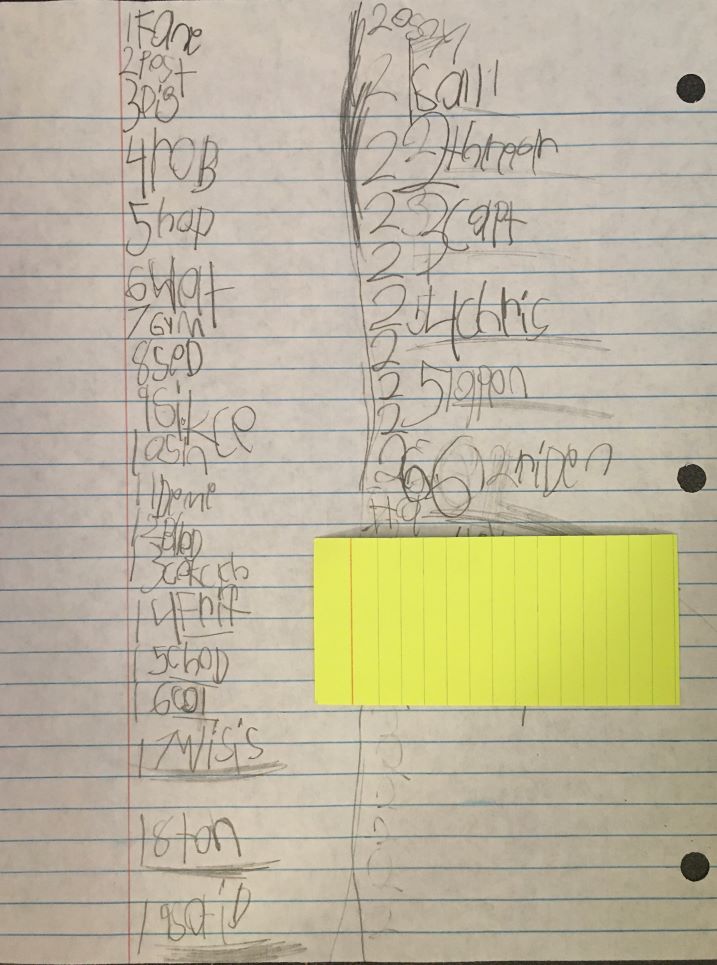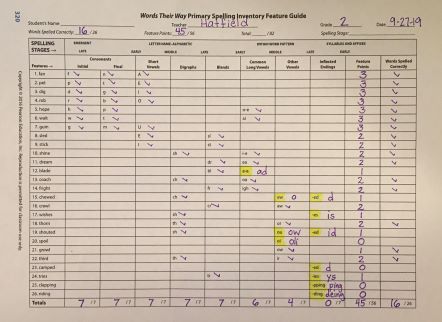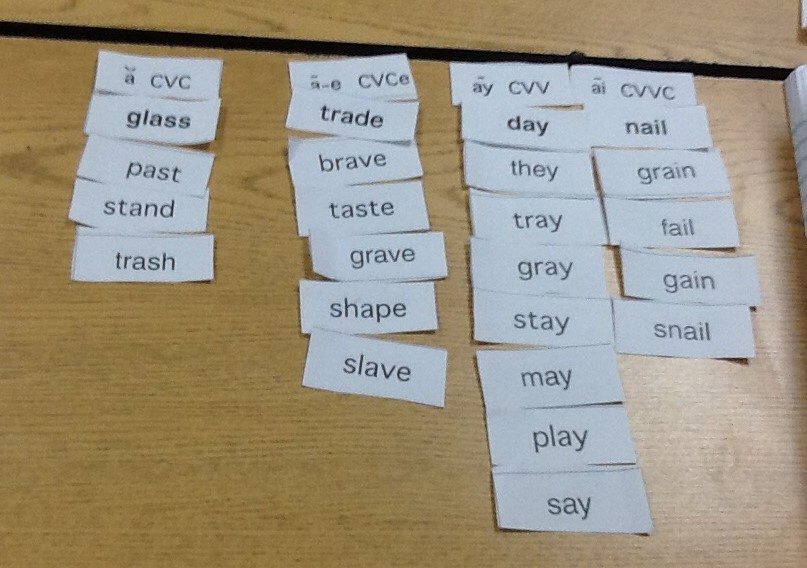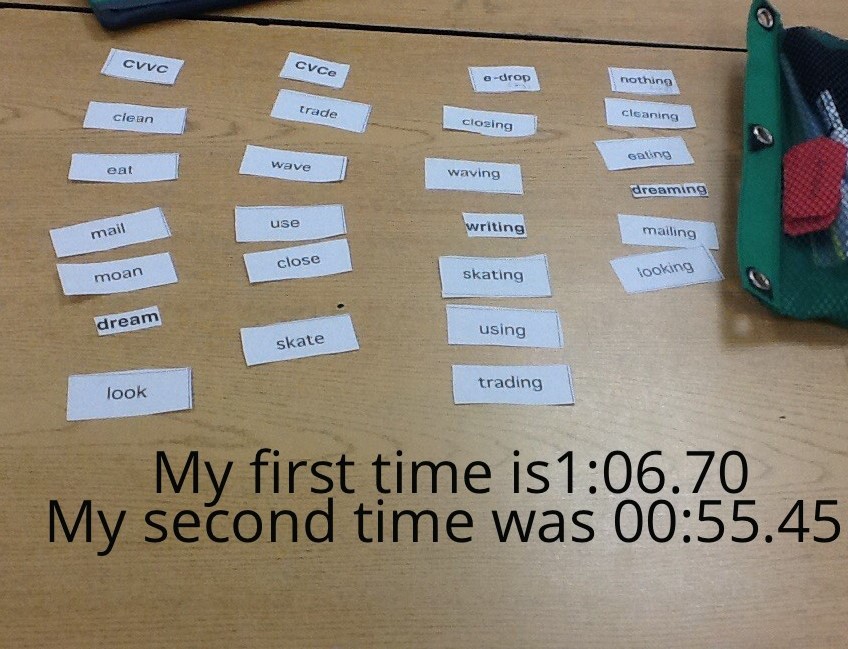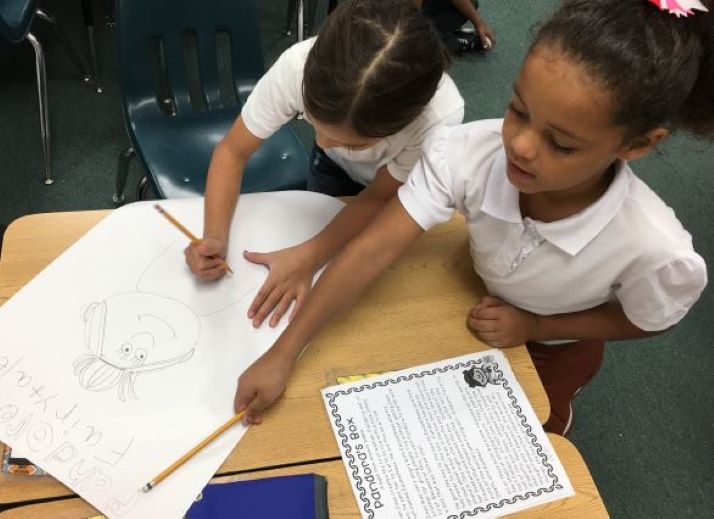In their
book Teaching Language and Literacy: Preschool Through the Elementary Grades (5th
ed.), Christie, Enz, Vukelich, & Roskos (2014) promote teaching writing to
elementary school students with a workshop structure. Teachers should allow
45-60 minutes per day for the writing workshop block and classrooms should be
arranged to provide spaces for students to work on their writing independently,
with partners or in small groups. This structure consists of an initial
mini-lesson, then time for students to write while the teacher conducts individual
student conferences, and finally a sharing time in which students read aloud a
portion of one of their writing pieces for the whole class or a small group of
peers.
Mini-lessons: The initial mini-lesson, also
referred to as a focus lesson, is short and concise, lasting approximately 10
minutes. At the beginning of the year, these lessons teach students the structure
of writing workshop and include topics such as peer conferencing,
teacher-student conferencing, and classroom procedures for editing, proofreading,
and publishing. Students are taught expectations for each of these situations
including the type of support they will be offered by the teacher and their
peers. After students understand the structure of the writing workshop and
routines are in place, focus lessons should provide explicit instruction in
three areas: qualities of writing, steps of the writing process and conventions
of language.
- Qualities
of writing—Instruction should include setting a purpose to write, the
characteristics of different genres, and how to analyze mentor texts for craft
moves that students can mimic in their own writing
- Writing
Process—Students should be taught that the writing process is ongoing.
Although, there are specific steps to writing (prewrite, draft, revise, edit,
publish), authors move back and forth within the writing process steps
frequently as they reflect on what they’ve written and revise to improve it.
- Conventions
of language—Teachers should provide instruction about “punctuation, grammar,
usage, handwriting, capitalization, and spelling”. (p.323) State and district
standards should be used as reference to identify which skills should be
included in these lessons.
In addition
to using state and district standards as a guide, the students’ writing itself should
drive classroom instruction. Teachers should use data they collect from ongoing
assessments of students’ writing during the year to determine what type of
focus lessons are needed and adjust instruction accordingly.
Writing Time and Student Conferences: The bulk of the time in a writing
workshop is allotted for students to write. During this time, each student
works on what he needs so students will be doing a variety of activities within
the writing process steps. For example, a few students may be working
independently to generate topics for a new writing piece, some might be
studying mentor texts to analyze the author’s craft and apply it to their
writing, and others may be collaborating together on revising their pieces. While
students are writing, the teacher conducts conferences with individual students
to provide differentiated instruction. Christie, et al. suggest the following
outline for teacher-student conferences:
- Writer’s
Intent: Initially, the teacher asks the student what he is working on to
research his intent or direction in order to determine the writer’s goal and
plan instruction during the conference.
- Writer’s
Need: The next step involves asking the student a few guiding questions to
direct the conversation in a way that will help the student improve as a
writer. The teacher needs to determine one or two aspects of the student’s
writing ability to focus her instruction on for this specific conference.
- Teach
the Writer: During the teaching step, the teacher provides instruction to the
student by showing him a mentor text that will help him improve in the specific
area identified, referring him back to previous writings, letting the writer
know something is confusing or missing, or perhaps asking questions to assist
the writer in self-reflection. This teaching piece is very brief and should not
be presented lecture-style, but delivered through conversation.
- Writer’s
Plan: In this last step, the teacher asks the student to articulate a plan, or
what his next steps will be as a writer. The teacher may need to provide a
sentence starter such as, “Now you’re going to…..” and wait for the student to
respond.
Tracking
teacher-student conferences by taking a few notes about the writer’s need, what
instruction was provided and the writer’s next steps is beneficial. The teacher
can use these notes to ensure she meets with all students regularly and to
determine if the students are showing growth by following through with their
stated plans as well as determining what focus lessons are needed by the
majority of the class.
Sharing: The last 10-15 minutes of a writing
workshop period consists of a group share time. Here are the different types of
share sessions Christie, et al. presented in Chapter 10:
- Share
meeting—students share drafts while the teacher and students ask questions,
some students may share specific strategies they’ve recently learned or tried
in their writing
- Writer’s
circle—the class is divided into small groups and sharing is conducted within
each small group at the same time which allows for more students to share in a
small amount of time
- Quiet
share—students bring writing utensils and paper to the share time so they can
write down questions or comments as the writers share their pieces (papers are
given to the writer to review later)
- Focused
share—the teacher asks students to read a specific component of their writing
piece such a their lead, their closing, or an example of descriptive language
- Process
share—students are asked to bring an example of a revision they made and
explain their thinking about why they made the change
- Celebration
share—students share completed writing pieces as a celebration of their hard
work
Some
examples of what students might share are graphic organizers or lists in which
they’ve generated writing topics and ideas, drafts they’ve started to show
specific components of their writing such as sensory language or to ask for
revision suggestions, particular phrases, sentences or paragraphs in which they’ve
imitated a mentor author, or possibly a completed writing piece that is ready
for publishing.
Teaching Mechanical Skills
In Chapter 11, Christie, Enz, Vukelich, &
Roskos (2014) suggest that even though students receive instruction for mechanical
skills of writing such as spelling, grammar, capitalization, punctuation and
handwriting through using editing checklists and teacher-student conferencing
during writing workshop, these activities may not be enough. Explicit
instruction is needed to strengthen mechanical skills for students to be
successful writers.
Teachers
should make spelling instruction a priority because spelling specialists
believe that student exposure and exploration through writing is not enough
(p.334). Since students in the same
classroom are on various levels, spelling instruction should be individualized.
Teachers and students work together to select words that need to be practiced
each week using the students’ recent writing as a guide. According to Shane
Templeton and Darryl Morris (1999), the selected words should be “known as
sight words” (p.336), should be words that students will use frequently, and at
the primary level, the words should follow a consistent spelling pattern. Since the class doesn’t have one spelling
list for all students, the teacher is not able to administer weekly pre-tests
and post-tests. Students will work cooperatively in pairs to complete the tests
as well as studying together daily throughout the week.
When considering
grammar instruction, teachers should be aware that research shows teaching the
rules of grammar in isolation through drilling practices is not effective
because students don’t make the connection between the worksheet practice
activities and their own writing. (Hillocks, 1986) Students should be taught
grammar through the use of authentic writing—mentor texts, teacher modeling,
and students’ own writing pieces. Teachers should also help students understand
that the structure of written language, just like spoken language, varies
depending on setting, purpose, and audience. “For example, the grammatical
structures used in writing a letter for publication in a newspaper are
different from those used to write a letter to a grandmother.” (p.339)
Punctuation and capitalization instruction should also be implemented through
using mentor texts and students’ writing pieces. Teachers can instruct students
editing skills through the use of checklists and modeling editing marks.
To support
EL learners in the area of mechanical skills, teachers must provide a multitude
of opportunities for structured conversations with their native speaking peers.
Development of oral language in context will increase their understanding and
use of the structures of grammar. Teacher modeling is also vital for ELLs in
addition to giving students daily opportunities to write about topics of
interest to them, experiences that are “in their wheelhouse” so to speak.
Detailed feedback about their writing will assist ELLs with grasping the
correct usage in English for grammar, punctuation and capitalization.
Reference:
Christie,
Enz, Vukelich, & Roskos (2014). Teaching
Language and Literacy Preschool Through the Elementary Grades (5th
ed.).


